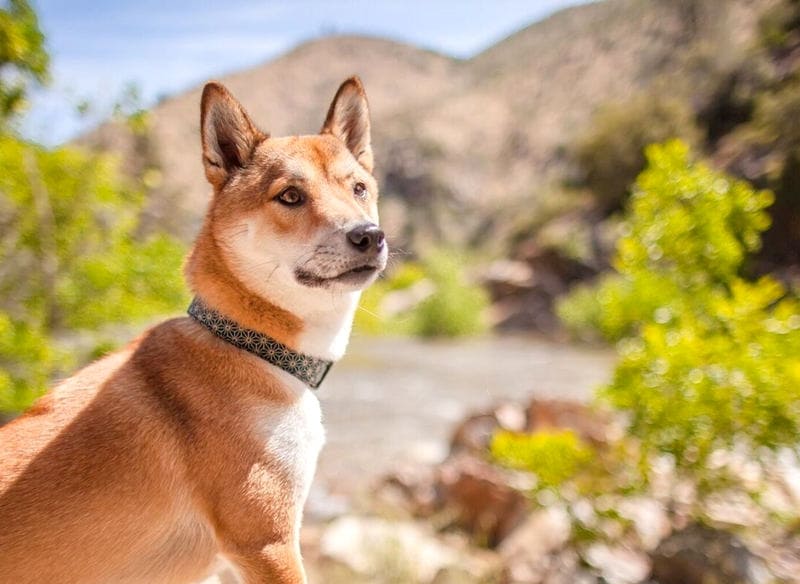
How to Attach a Leash to a Collar: A Comprehensive Guide
Share
For health-conscious pet owners, understanding how to attach a leash to a collar correctly is a crucial aspect of pet care. This seemingly simple task is essential not only for the comfort of your pet but also for ensuring their safety during walks. This guide will explore the best practices, tips, and considerations to keep in mind when attaching a leash to a collar, ensuring a safe and enjoyable experience for both you and your pet.

Understanding the Importance of Proper Attachment
Attaching a leash to a collar may appear straightforward, but doing it incorrectly can lead to discomfort or even injury for your pet. A well-attached leash ensures that you have control over your pet without causing unnecessary strain on their neck and throat. Whether you're using a traditional collar or a harness, understanding the mechanics of safe leash attachment is crucial.
For those new to pet ownership, learning the benefits of breakaway dog collars can offer additional safety features that prevent accidental choking or entanglement during walks.
Choosing the Right Collar and Leash
The first step to ensuring proper leash attachment is selecting the right collar and leash for your pet. Factors to consider include the size, breed, and behavior of your pet. A properly fitted collar should sit comfortably around your pet's neck without being too tight or too loose. It's essential to regularly check the fit of the collar, especially if your pet is still growing.
Leashes come in various materials and lengths, each suited for different activities and environments. For instance, a sturdy, short leash is ideal for city walks, while a longer, retractable leash might be better for open spaces where your pet can explore freely.
How to Attach the Leash Securely
Once you have the right equipment, it's time to attach the leash properly. Begin by ensuring that the collar is positioned correctly on your pet's neck. The collar should be snug but not tight, allowing you to fit two fingers between the collar and your pet's neck.
Locate the D-ring on the collar, which is the metal loop specifically designed for attaching a leash. Open the clasp of the leash and thread it through the D-ring, ensuring that it clicks securely into place. Give a gentle tug on the leash to confirm that it's attached firmly. This step is crucial to prevent the leash from detaching unexpectedly during a walk.
Common Mistakes to Avoid
Even experienced pet owners can make mistakes when attaching a leash. One common error is using a collar that is too loose or too tight, which can cause discomfort or allow your pet to slip out. Regularly checking the condition of the collar and leash is essential to ensure they are in good working order.
Another mistake is attaching the leash to an incorrect part of the collar, such as decorative loops not meant for securing a leash. Always use the designated D-ring for leash attachment.
For more tips on maintaining your pet's collar, check out our guide on how to clean a dog collar.
Ensuring Your Pet's Comfort and Safety
Your pet's comfort and safety should always be your top priority. Regularly inspect the collar and leash for signs of wear and tear, replacing them if necessary. Additionally, consider the environment and activity level when choosing the right collar and leash combination.
The history of dog collars is fascinating and understanding their evolution can provide insights into their functionality and design. To learn more, visit this brief history of dog collars.
Additional Tips for Leash Training
Leash training is an essential part of owning a pet, especially for dogs. A well-trained pet is easier to manage and enjoys walks more. Start by introducing your pet to the collar and leash in a familiar environment, allowing them to get used to the sensation.
Practice walking indoors before venturing outside. Use positive reinforcement techniques, such as treats and praise, to encourage good behavior. This approach not only makes leash training enjoyable but also strengthens the bond between you and your pet.
For a step-by-step guide on introducing a collar to your pet, check out our article on how to introduce a collar to a dog.
Conclusion
Knowing how to attach a leash to a collar correctly is an essential skill for any pet owner. By selecting the right equipment, attaching the leash securely, and avoiding common mistakes, you can ensure a safe and enjoyable experience for both you and your pet. Remember, regular checks and maintenance of your pet's collar and leash can prevent potential issues and keep your pet comfortable and safe.
For DIY enthusiasts, creating your own braided dog collar can be a fun and rewarding project. Learn more about it in our DIY braided dog collars guide.

FAQ
Q: How tight should a collar be on a dog?
A: A collar should be snug but not tight. You should be able to fit two fingers between the collar and your dog's neck.
Q: Can I attach a leash to any type of collar?
A: Not all collars are designed for leash attachment. Always use a collar with a sturdy D-ring for attaching a leash.
Q: How often should I check my pet's collar and leash?
A: Regularly inspect the collar and leash for wear and tear. Check the fit of the collar frequently, especially if your pet is still growing.
This article contains affiliate links. We may earn a commission at no extra cost to you.
